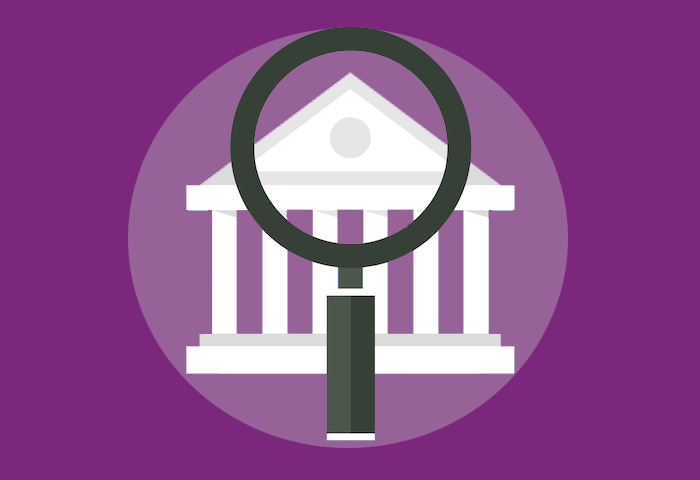Banking margin is one of the key indicators of profitability of financial institutions. It reflects the effectiveness of their work. In fact, bank margin is the difference between interest rates for attracting money capital and its investment.
Basic concepts
We describe the margin in simple words. This economic category is the difference between the following values:
- Credit and deposit interest rates.
- Credit rates for certain categories of borrowers.
- Interest rates on passive and active operations.

The banks calculate the minimum margin in the form of the margin of profitability of a financial organization. The average can also be analyzed. Banking margins are influenced by various factors. For example, the terms of credit provision and storage of deposits.
One of the basic indicators of the effectiveness of a credit institution is the interest net banking margin. It is one of the main parameters that demonstrate the effectiveness of the bank. They calculate it as the ratio of the difference between commission income and interest expenses to assets of a financial institution.
Banking margin is calculated on the basis of actual values for past periods or as forecasts for the next stage. The normative level of the net percentage indicator in the financial world practice is from three to four, and on average in Russia this value is equal to six percent.
Below is the margin formula.

How to calculate this ratio?
So, economists understand margin as the difference between the selling price and the cost of goods. It is a direct reflection of the effectiveness of any commercial activity, that is, a demonstration of how successfully a company converts its income into profit. Serves as a relative value, expressed as a percentage. The margin formula is usually as follows: profit / income is multiplied by one hundred.
A simple example is worth giving. It is known that the margin of the organization is twenty-five percent. From this we can conclude that each ruble of the proceeds brings the company twenty-five cents of profit. The remaining seventy-five kopecks are classified as expenses.
In simple words about this concept
Speaking in an accessible language, it is worth saying that by bank margin is meant the difference obtained after deducting the commodity cost from the selling price and the interest rate from the quote established on the exchange. This concept is often found in the field of exchange trading, as well as in banking. They are used both in insurance and in trade. For each specific direction inherent in one or another characteristic nuances. Indicate the margin, as a rule, as a percentage or as an absolute value.
Margin Raising Path
Many entrepreneurs are thinking about how to increase margins. But often businessmen believe that if they increase the product margin, they will frighten off their customers, which means they will lose customers. But most experienced professionals strongly disagree with this.
Thus, they believe that the margin of goods can and must be increased without fail. It is noted that this technique does not just work, but actually makes a profit. And in that case, if the head of the business is still afraid to raise prices, it is still necessary to do this by working through the indicators of the sales formula.

Interest rates on loans and deposits
What is currently happening with loan interest rates? At the end of October of the year that ended, the key rate of the Central Bank of the Russian Federation was 8.20%, and now it reaches 7.70%. After a terrible figure for many customers, equal to 17% (as it happened at the end of 2015), this value is considered as very mild. At the same time, rates on various loans also begin to gradually move down. Currently, the average offers of banks in all regions of the country fluctuate in a quite attractive limit for any target audience:
- Consumer services make up from 10 to 21%.
- Mortgage from 6 to 10%.
- Car loans from 10.8 to 19.8%.
Now consider the interest rates on the deposit. According to the latest data, at the end of 2018, the most attractive was the proposal called “a growing percentage” of the Ural Development Bank, which offered from 7 to 8.5% depending on the terms of the deposit. At the same time, the minimum opening amount is 10,000 rubles.
But it is worth recalling once again that high interest on a deposit is the prerogative of small banks, which are often not included in the most authoritative rating. The main financial institutions of our country (we are talking about Sberbank and VTB) are ready to offer customers only 3 to 7% per annum. VTB has a better offer with an interest rate of 8.5%, but to receive it you will have to make a contribution of at least 30,000 rubles for a period of three years or more without any replenishment and withdrawal. Profitable are contributions to medium-sized organizations. In this segment, people can count on 8.5% per annum.

Consider the Federal Law "On Banks and Banking".
Income and expenses of financial institutions
Federal Law of December 1990 No. 395 entitled “On Banks and Banking Activities” regulates the main provisions related to the economic sphere under consideration. It indicates that the income of the relevant financial institutions is the total amount of cash that comes to the relevant organization as a result of active operations and in the provision of other banking services.
According to the Federal Law “On Banks and Banking Activities”, the yield should be sufficient not only to cover operating expenses, but also for the possibility of increasing equity capital, and, in addition, for paying income to shareholders. It is worth noting that in the end, such a profit increases banking authority, improving its competitive position in the market.

The higher the proportion of income that is received on a regular basis, the higher the quality of bank profits. When part of the earnings is random, then this indicates the instability of the activity. The bank’s income is divided into two basic categories: the interest and non-interest types. The former account for up to 70% of the profits of a financial institution. They, as a rule, consist of earnings from providing credit services to clients, from investments in securities and other manipulations.
The Bank’s interest income includes income from lending to business entities and individuals. Earnings on deposits are also relevant here. Other options include profit from operations with branches and other institutions, as well as off-balance sheet transactions. We continue to talk about bank margin, its factors and ways to increase it.

At the bank is a credit margin
In the activities of bankers, the often encountered category is credit margin, which is considered the difference that is received after deducting from the amount acquired by the borrower in his hands and the contractual value of the products. In loan agreements, each figure agreed upon in the transaction is prescribed.
The income and expenses of the bank directly depend on the volume of margin. To conduct an analysis of the profitability of the institution, as a rule, an indicator in the form of a percentage net margin is suitable.It is calculated as the difference that is calculated between capital and income from all investments of a credit institution. Banks earn interest on net income through lending, as well as through investment.
A term called “guarantee margin” is considered when an institution provides a secured loan. This ratio is calculated by subtracting the size of the loan from the value of the property left as a pledge.
Bank profit
It is worth noting that the term “margin” itself can be interpreted in different ways in the countries of the European Union and in Russia. In our territory, this concept is considered similar to the designation "net profit", so there is no fundamental difference in the calculation. It is important to remember that we are talking about profitability, but not about margins.
True, there is still a difference between one indicator and another. The term “margin” is considered a very important analytical value, which is used on stock exchanges, and, in addition, in banking. The size of the margin provided to brokers is essential for traders. During the analysis of income, it can be compared with retail retail margins.

Conclusion
Thus, margin is one of the determining factors in the field of pricing. But not every entrepreneur can explain the exact meaning of this word. The considered concept is often operated by specialists from absolutely all areas of the economy. It, as a rule, is a relative value, serving as an indicator of profitability. In the field of trade, insurance and banking, this indicator has its own specifics. Directly at banks, they calculate the minimum margin in the form of the margin of profitability of a financial organization.
